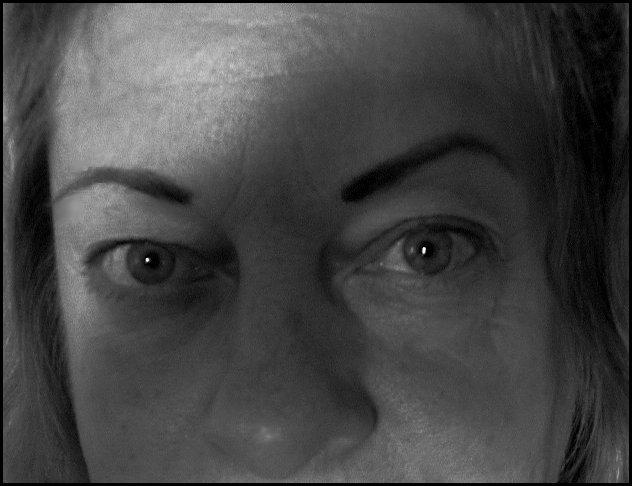The amazing moon of January
Obviously, this is not the moon. It is a photo I liked while sorting photos for the Light Garden album on my web page. I did not get a photo of the blue moon, or the blood moon, or the eclipse. There is extensive information on Space.com
Tuesday, January 30, 2018
from the Times Colonist
by Dirk Meissner
Get Ready for a rare three-part moon show
There will be a super bule blood moon on Wednesday and a total lunar eclipse, evenets that by themselves are not uncommon but combined they make for a spectacular night for skywatchers in Western Canada.
On the West Coast, the skies will feature the fantastic lunar show as the gravitational forces of the sun and moon churn up the strongest tides of the year, known as king or spring tides.
"I'm looking to put on my star-gazing hat and if it's a nice, calm evening I'd encourage everybody to go out and have a look at the super moon," said oceanographer Richard Dewey, associate director of science services at the University of Victoria's Ocean Networks Canada. "It's one of these things that we need to know that we're just part of a big solar system and the moon is out there as our best partner."
A blue moon is a full moon that comes twice in the same month. During a lunar eclipse, when the moon passes into Earth's shadow, the moon often turns red, prompting the moniker blood moon. The super moon appears larger because it's six per cent closer to Earth and 14 per cent brighter than normal.
All three events are happening Wednesday morning.
Dewey, an expert in coastal flows, tides, waves and turbulence, said the beauty and power of the moon and sea will be on full display.
"We've got tide gauges out with Ocean Networks Canada and pressure gauges and we'll be watching to see that, yes, we're seeing some of the largest tides of the year, " said Dewey, who has conducted research from Japan to California and along the British Columbia, Alaska and Arctic coasts.
Ocean Networks said its Coastbuster app, developed to track marine debris on B.C. shores from the March 2011 tsunami in Japan, can be used to report and comment on tidal activity, including the king tide.
"The moon is a little bit closer, so it appears a little big bigger, " said Dewey. "it's also aligned with the sun, so there could be places where the moon is just reaching into Earth's shadow, so you'll get a lunar eclipse. It's going to be a little bit of an extraordinary sight."
On its website, NASA says a lunar eclipse can only happen on the night of a full moon. It only occurs when the sun, Earth and moon are aligned and the moon passes behind Earth.
In Victoria, the total lunar eclipse starts at 2:51 a.m. and ends at 7:50 a.m. The eclipse will be at its maximum at 5:29 a.m.
Tuesday, January 30, 2018
from the Times Colonist
by Dirk Meissner
Get Ready for a rare three-part moon show
There will be a super bule blood moon on Wednesday and a total lunar eclipse, evenets that by themselves are not uncommon but combined they make for a spectacular night for skywatchers in Western Canada.
On the West Coast, the skies will feature the fantastic lunar show as the gravitational forces of the sun and moon churn up the strongest tides of the year, known as king or spring tides.
"I'm looking to put on my star-gazing hat and if it's a nice, calm evening I'd encourage everybody to go out and have a look at the super moon," said oceanographer Richard Dewey, associate director of science services at the University of Victoria's Ocean Networks Canada. "It's one of these things that we need to know that we're just part of a big solar system and the moon is out there as our best partner."
A blue moon is a full moon that comes twice in the same month. During a lunar eclipse, when the moon passes into Earth's shadow, the moon often turns red, prompting the moniker blood moon. The super moon appears larger because it's six per cent closer to Earth and 14 per cent brighter than normal.
All three events are happening Wednesday morning.
Dewey, an expert in coastal flows, tides, waves and turbulence, said the beauty and power of the moon and sea will be on full display.
"We've got tide gauges out with Ocean Networks Canada and pressure gauges and we'll be watching to see that, yes, we're seeing some of the largest tides of the year, " said Dewey, who has conducted research from Japan to California and along the British Columbia, Alaska and Arctic coasts.
Ocean Networks said its Coastbuster app, developed to track marine debris on B.C. shores from the March 2011 tsunami in Japan, can be used to report and comment on tidal activity, including the king tide.
"The moon is a little bit closer, so it appears a little big bigger, " said Dewey. "it's also aligned with the sun, so there could be places where the moon is just reaching into Earth's shadow, so you'll get a lunar eclipse. It's going to be a little bit of an extraordinary sight."
On its website, NASA says a lunar eclipse can only happen on the night of a full moon. It only occurs when the sun, Earth and moon are aligned and the moon passes behind Earth.
In Victoria, the total lunar eclipse starts at 2:51 a.m. and ends at 7:50 a.m. The eclipse will be at its maximum at 5:29 a.m.



No comments:
Post a Comment